Appearing on the market in April 2021, the Lenovo Legion Phone 2 Pro is designed for gamers. It comes with a powerful Qualcomm Snapdragon 888 processor and a large (5500 mAh) battery with fast charging, as well as a multi-cam setup with a 64 MP main camera. Let’s take a look at how well it performed in our Display protocol tests.
Key display specifications:
- AMOLED screen
- Size: 6.92 inches (~84% screen-to-body ratio)
- Dimensions: 176 x 78.5 x 9.9 mm (6.93 x 3.09 x 0.39 inches)
- Resolution: 1080 x 2460 pixels, FHD+
- Aspect ratio: 19.5:9, ~388 ppi
- Refresh rate: 144 Hz
About DXOMARK Display tests: For scoring and analysis in our smartphone and other display reviews, DXOMARK engineers perform a variety of objective and perceptual tests under controlled lab and real-life conditions. This article highlights the most important results of our testing. Note that we evaluate display attributes using only the device’s built-in display hardware and its still image (gallery) and video apps at their default settings. (For in-depth information about how we evaluate smartphone and other displays, check out our articles, “How DXOMARK tests display quality” and “A closer look at DXOMARK Display testing.”)
Test summary
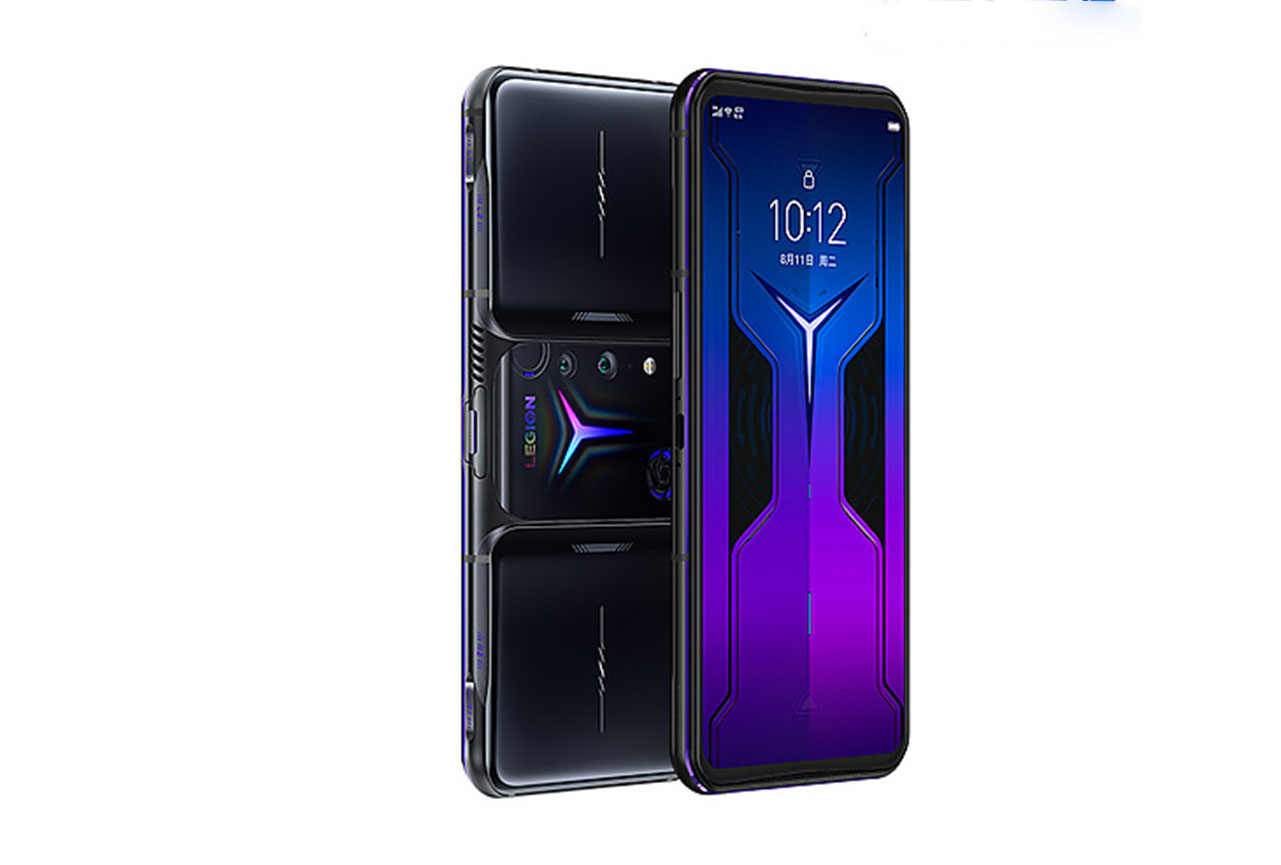 Lenovo Legion Phone 2 Pro
Lenovo Legion Phone 2 Pro


Pros
- Readability is well suited for indoor conditions.
- Touch is smooth when playing video games.
- The device is flicker free.
Cons
- In outdoor conditions, the device lacks brightness, making content hard to see.
- HDR10 videos are too dark and not enjoyable in low light; photos also lack details in this environment.
- The device is not uniform at all for both brightness and color.
A quite decent score for managing artifacts is unable to make up for the Lenovo Legion Phone 2 Pro’s particularly low scores for readability and video, which place it very near the bottom of our Display protocol database.
Analyses and comparisons
The DXOMARK Display overall score of 53 for the Lenovo Legion Phone 2 Pro is derived from its scores across six categories: readability, color, video, motion, touch, and artifacts. In this section, we’ll take a closer look at these display quality sub-scores and explain what they mean for the user, and we will compare the Lenovo Legion Phone 2 Pro’s performance in several areas against three of its key competitors, the Asus ROG Phone 5, the Samsung Galaxy S21 Ultra (Exynos), and the Apple iPhone 12 Pro Max.

Readability
Lenovo Legion Phone 2 Pro
36
76
DXOMARK uses the device’s gallery app to show static (still image) content when measuring the device’s display for brightness, contrast, gamma, and blue light impact, etc.
The Lenovo Legion Phone 2 Pro racked up the lowest score for readability in our database thus far, displacing the Xiaomi Black Shark 3’s formerly lowest score of 50. While the Lenovo’s is well suited for indoor and low-light conditions, dark tones are not visible at all in pictures; further, the device lacks brightness and details when viewed outdoors, leading to an unpleasant experience.
Per above, brightness is well suited for readability in indoor conditions:
However, in outdoor conditions, the Lenovo device severely lacks brightness and is nearly unreadable, particularly when viewed under direct sunlight:
The Lenovo device is slow to react to ambient lighting changes. Moreover, it shows noticeable steps in falling transitions.
Although users can manually adjust the brightness to make a device more readable (remember, we conduct our tests using the device’s default settings), they cannot do anything about uniformity, and the Lenovo device has a particularly non-uniform display, as you can see below:
The Lenovo device loses some brightness when the blue light filter (BLF) is on; moreover, its strong color cast makes reading even harder (as you will see in the next section).

Color
Lenovo Legion Phone 2 Pro
62
92
DXOMARK uses the device’s gallery app to show static (still image) content when measuring the device’s display for white point, gamut, uniformity, color fidelity, and blue light filter impact, etc.
The Lenovo Legion Phone 2 Pro does not adapt its white point to the ambient lighting.
Indoors, skin tones on the Lenovo display appear more orange than they should be, and colors are oversaturated:
In shady conditions outdoors, the Legion Phone 2 Pro shows a green cast in most pictures. Under direct sunlight, the device shows a yellow-green cast that alters the color rendering.
The charts below show the Lenovo device’s color reproduction fidelity in pitch darkness (0 lux) and under 1000 lux lighting in the standard sRGB color space. The center of each circle is the target color; anything outside the circle represents a noticeable color difference. The further the tip of the arrow is outside of the circle, the more a user will notice the difference between the color on the display and the original color of the source material. The Legion Phone 2 shows visible inaccuracies in this regard:


When viewed at an angle, colored stripes alternating between pink and green are noticeable, as shown in the scatter chart on the right:
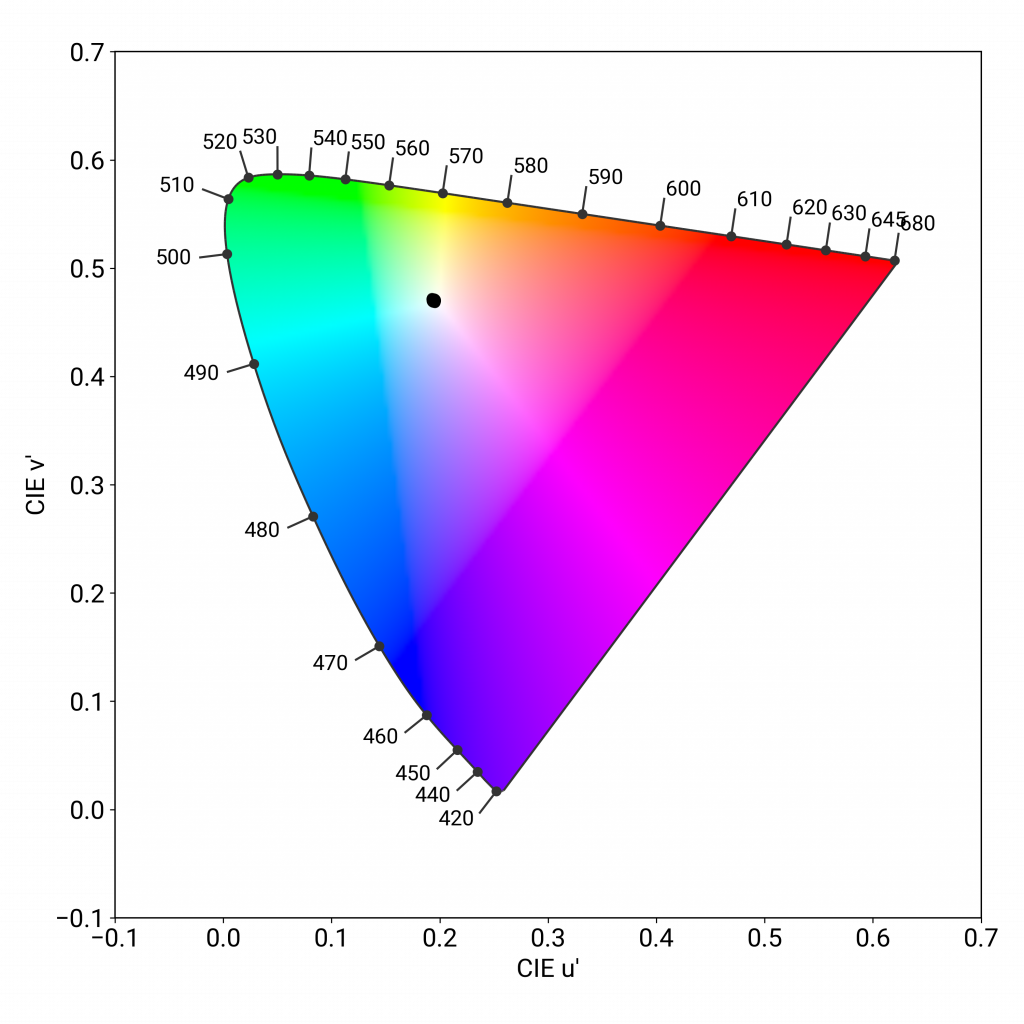
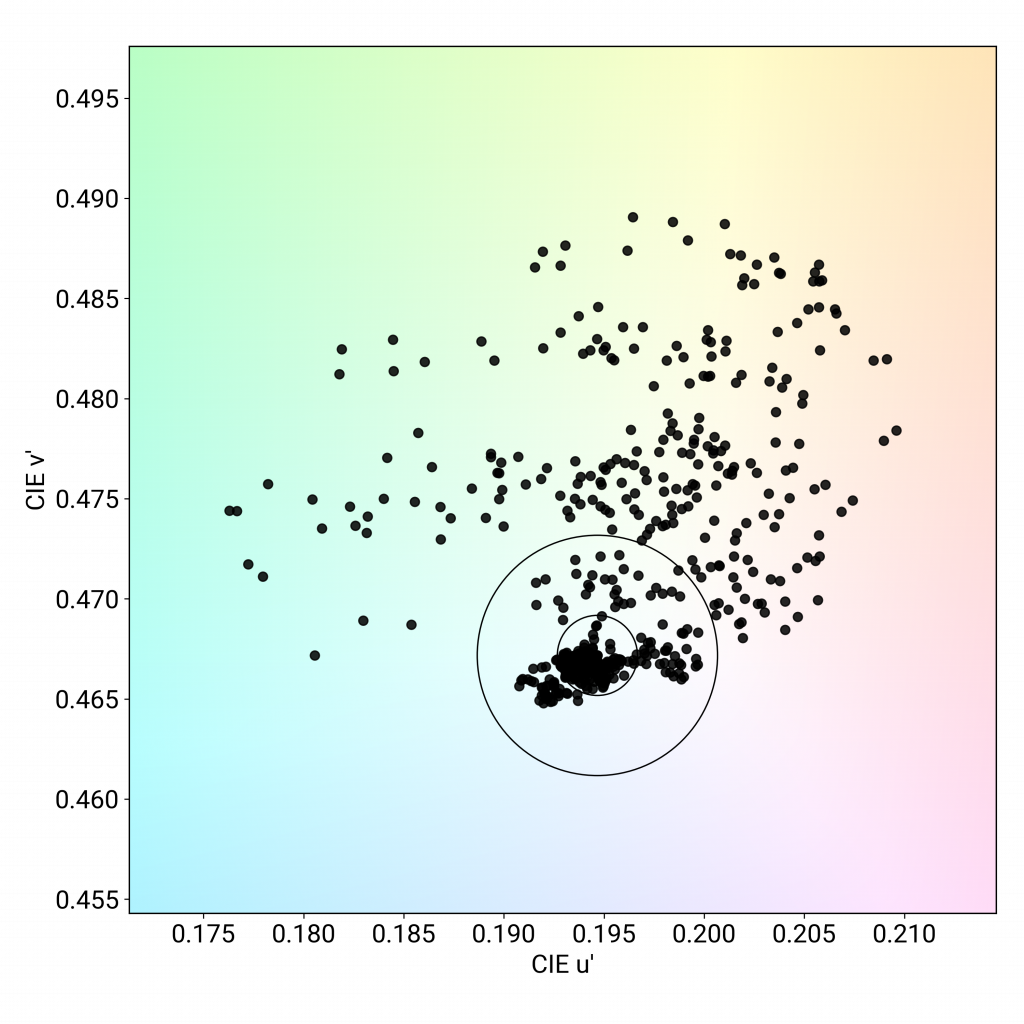
The Lenovo’s stark lack of color uniformity can be seen in the array used in the previous section to illustrate its brightness non-uniformity.
When BLF is on, the Legion Phone 2 Pro shifts to a strong orange cast that is as unpleasant — or nearly so — as the Apple iPhone 12 Pro Max’s on the far right:

Video
Lenovo Legion Phone 2 Pro
34
91
DXOMARK uses the device’s video (or browser) app to show dynamic content when measuring the device’s display for brightness, contrast, gamma, and color.
The Lenovo Legion Phone 2 Pro’s brightness is much too low for comfortably watching HDR10 content in a low-light environment, although it just manages to stay ahead of the bottom score for video, which again belongs to the Xiaomi Black Shark 3 Pro (31 points). Mid-tones are hardly visible on the Lenovo device when watching HDR10 videos, and dark details are not visible at all.
The Lenovo’s video performance does improve under indoor lighting conditions, but it is still below average.
The Legion Phone 2 Pro does not render HDR10 video color accurately, generally oversaturated and often showing a yellow green cast. Color inaccuracy on skin tones is also an issue, with the yellow-green cast adversely altering the rendering.

Motion
Lenovo Legion Phone 2 Pro
76
87
The Lenovo Legion Phone 2 Pro stutters at 30 and 60 fps as well as when playing video games. However, the device manages motion blur well.
When jumping forward and backward in the timeline of a video, the Lenovo device shows a slight delay before resuming the video, which while not ideal, is fairly typical behavior for many phones.

Touch
Lenovo Legion Phone 2 Pro
73
85
The Lenovo’s zoom accuracy in the gallery app is quite good:
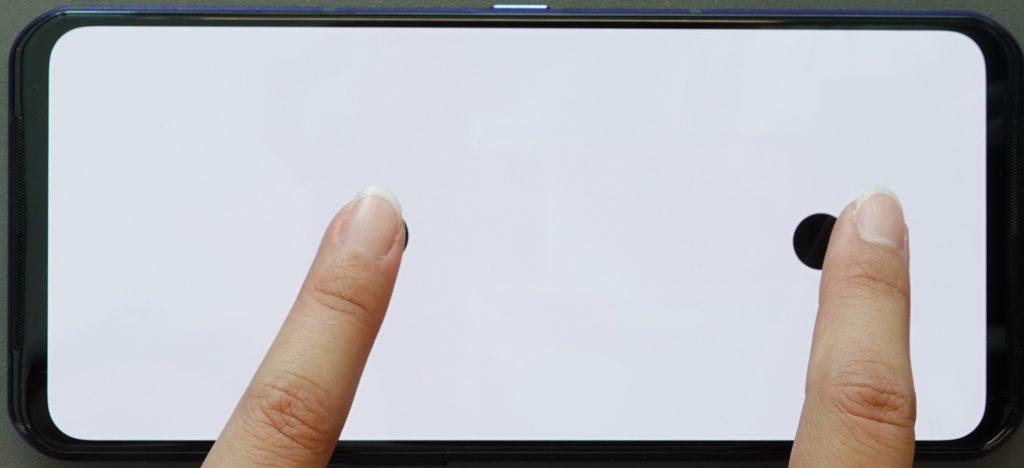
Corners can be hard to use when playing a game, but the gaming experience on the middle of the screen and along the edges is good. The device is not very smooth when browsing the web, although it is smooth when playing video games and in the gallery app.

Artifacts
Lenovo Legion Phone 2 Pro
81
86
The Lenovo Legion Phone 2 Pro does a pretty good job of managing artifacts overall. For one thing, there is no notch on the Lenovo device. It also handles ghost touches quite well, especially when held in portrait mode. While the device has some issues with judder when playing videos at 24 fps and 60 fps, it shows no judder at 30 fps. Further, the Lenovo device does not flicker:
On the downside, aliasing is quite visible when playing video games.
Conclusion
The Lenovo Legion Phone 2 Pro struggles to provide sufficient brightness for easy readability, and its screen is among the least uniform for both brightness and color of all devices tested thus far. It fared somewhat better in our tests for motion, touch, and artifacts.


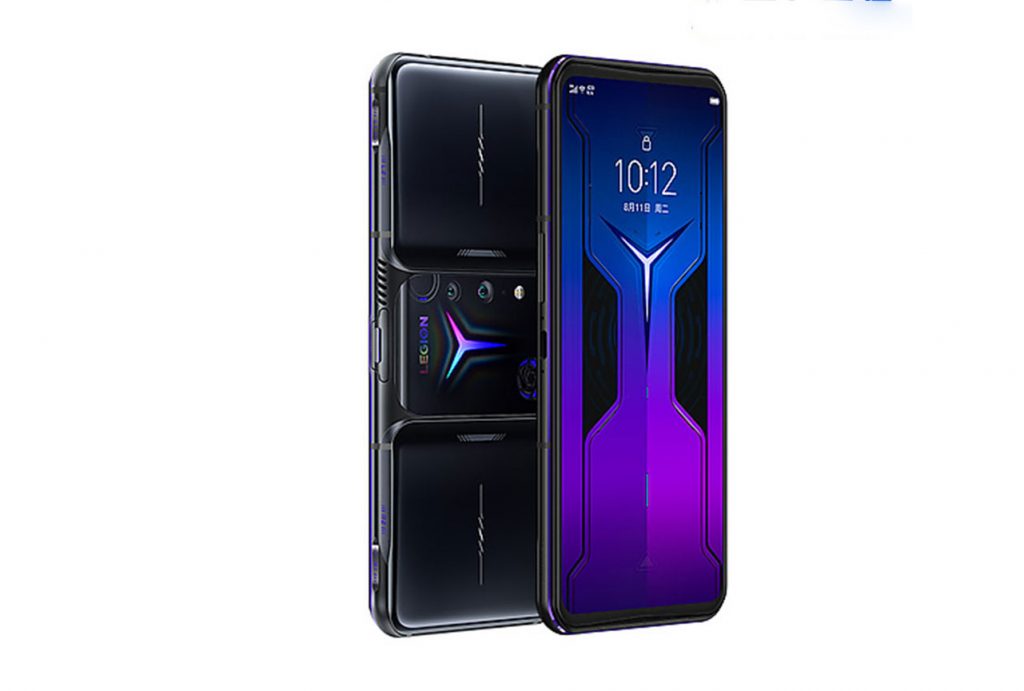



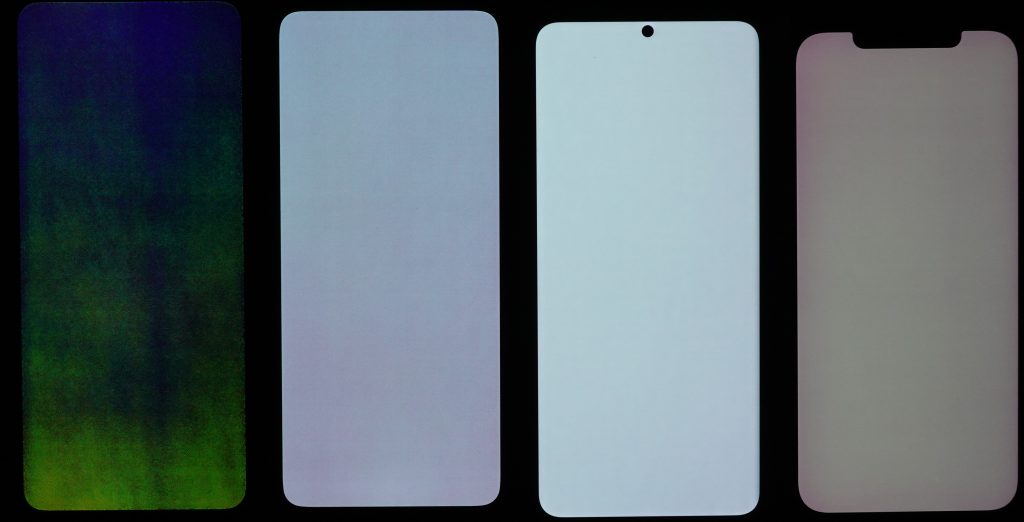


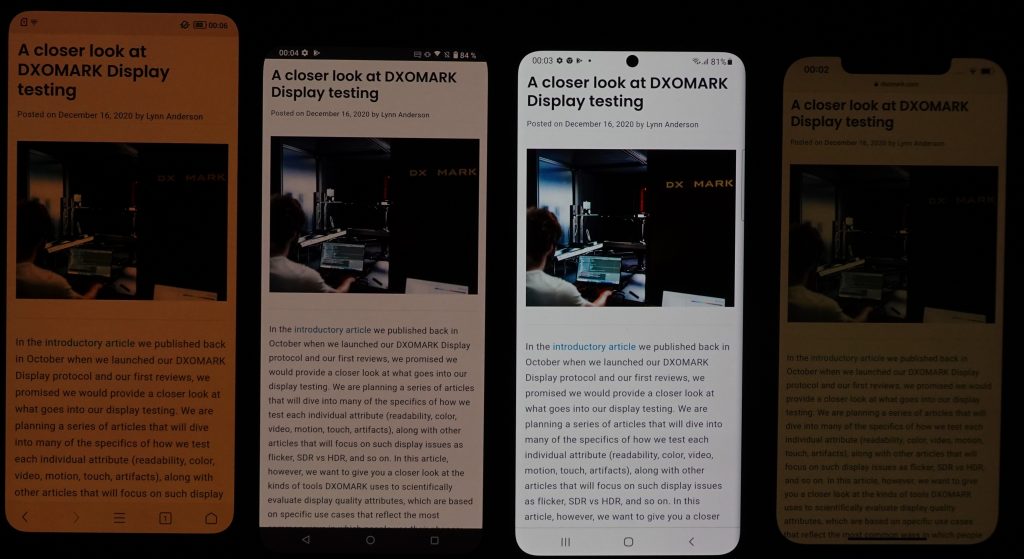
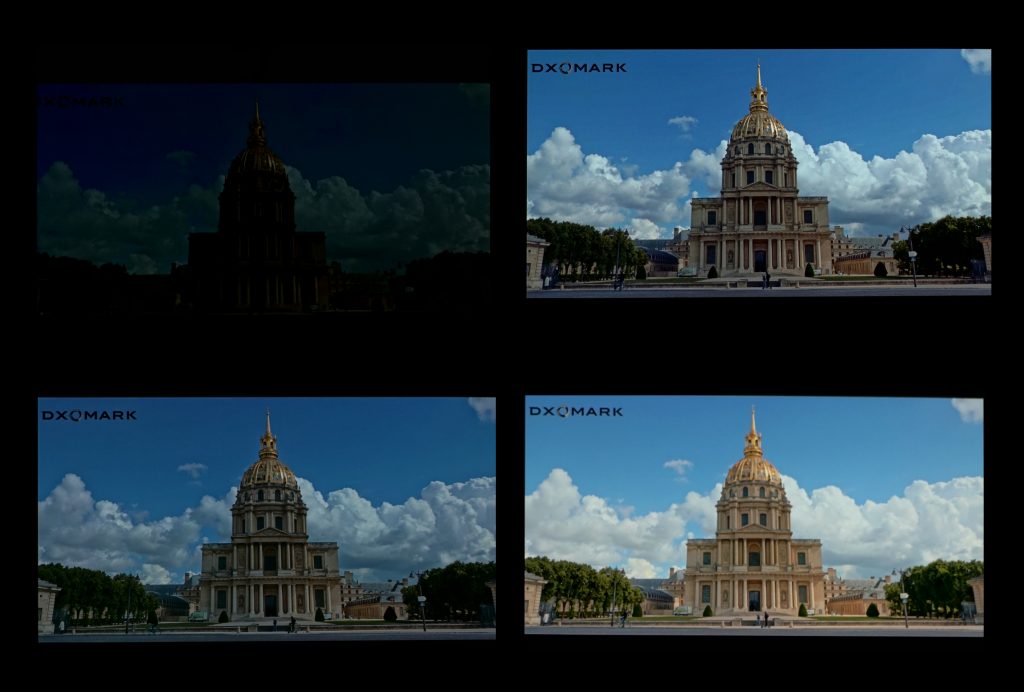




DXOMARK encourages its readers to share comments on the articles. To read or post comments, Disqus cookies are required. Change your Cookies Preferences and read more about our Comment Policy.